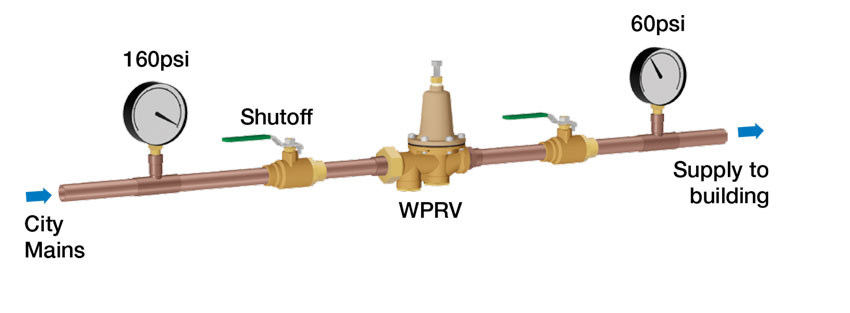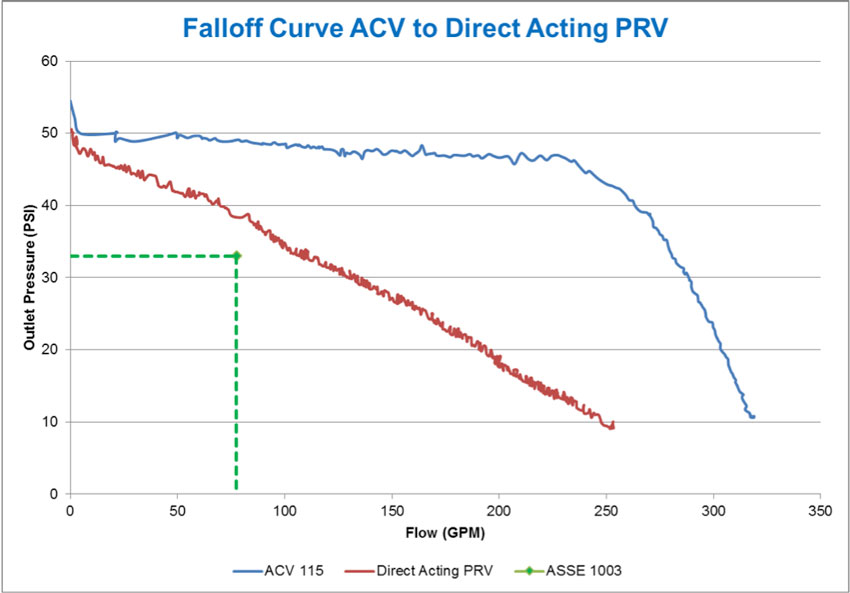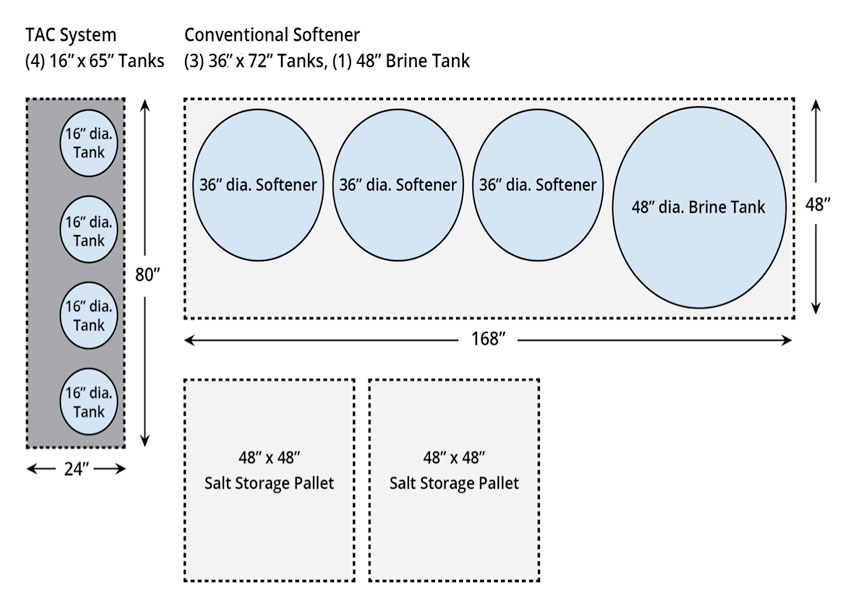Meeting New Water Quality Mandates in Health-Care Settings
Water Systems and LD in Health-care Facilities
With an understanding of the nature of the issues and the requirements of the standards, let’s turn our attention to the specific parts of a water system in health-care facilities that need to be addressed. Most commonly, LD outbreaks are linked to environmental reservoirs in large or complex water systems, including those found in health-care facilities such as hospitals and long-term care facilities. When water is moved or sprayed into the air, such as in showerheads, cooling towers, hot tubs, and decorative fountains, then transmission of the legionella bacteria to humans is possible. Further, legionella can grow in parts of building water systems that are continually wet and within a temperature range suitable for growth. The ideal range of temperature for such growth is 95 to 115 degrees Fahrenheit, but the bacteria is known to grow and be active anywhere between 68 to 122 degrees Fahrenheit. Below 68 degrees, legionella bacteria can survive but are dormant, while above 122 degrees they can survive but do not multiply. The bacteria will die slowly when temperatures in the water reach 131 degrees Fahrenheit and rapidly between 158 to 176 degrees.

Legionella bacteria is very sensitive to temperature. It can go dormant at low temperatures, thrive in normal building temperatures, and be killed at higher temperatures.
Since a building water system contains many different subsystems and components, we will review some of the major ones in the following sections with a discussion of the relevant approaches to identifying legionella hazards and control methods.
Water Supply Components
Most health-care facilities rely on a public or municipal water source that has likely been treated in a centralized plant and piped through public water supply lines. The water leaving the plant has certainly been tested and maintained to prescriptive levels for potability and human health, but there is no guarantee that its trip through an aging piping system will keep it that way. Water line breaks, outdated joint connections, and other conditions all have the potential for contaminating municipal water delivered to a building. Therefore several water supply components deserve particular attention.
- Backflow preventers: Among the common approaches to protecting water quality in a water supply system, the use of backflow preventers is typical. Backflow systems are essentially a series of plumbing control valves that prevent the reverse flow of polluted water from entering into the potable water supply due to back-siphonage and/or backpressure. Some municipal water systems will require backflow systems, particularly on large water users such as health-care facilities, since it is in the interest of public safety and health to do so, especially if there is any chance of infectious bacteria entering the water system. Therefore, including backflow preventers can be part of a control measure in a water management program. When selecting back flow preventers, there are choices to consider. Stainless steel versions are available as basic or mid-tier products with some limited options. More robust and durable choices include ductile iron valves, some with epoxy-coated paint on the exterior and designs for continuous or heavy usage.
- Pressure reduction: One of the things that can alter the performance of any water system is the water operating pressure. Water coming in from a municipal system may be affected by other buildings as well as the level of demand in a health-care building. Either way, if the pressure is too high, some parts of the building water system may not work well or can be damaged. If the pressure is too low, then water may not flow as intended and may lead to conditions that are unwanted. The remedy is to install a valve to regulate the water pressure in the building.

Water pressure reducing valves (WPRV) can help control water pressure throughout a facility. A single regulator installation, shown here, is the most typical installation configuration. It is recommended where incoming pressure is less than 200 psi and when the reduction ratio is less than 3:1.
There are two fundamental choices in this regard. The first is a conventional water pressure reducing valve (WPRV), which reduces fluctuating high inlet pressure to a constant lower outlet pressure. Such WPRVs typically have a broad range of flow potential and can be fully adjustable. For example, a municipal water system that is providing water in the 80 to 100 psi range could be regulated to a constant 50 psi with an appropriately sized and set WPRV. Further, smaller WPRVs could be located within an overall system to be set for different settings to suit the optimal pressure needs of different parts of a health-care facility. The second option is to use an automatic control valve (ACV) that provides the same function but is designed and constructed differently. The primary operating difference between an ACV and a WPRV is the flow rate in gallons per minute (GPM) compared to the pressure in the system. Using a WPRV, the pressure will decrease as the flow increases. However, with an ACV, the pressure can remain fairly constant even as flow rates reach up to about 250 GPM.

Automatic control valves help maintain water flow rates unlike direct acting pressure reducing valves, which typically reduce pressure as flow rates increase.
One item related to flow rates is the current code requirement for many faucets and fixtures to operate in low-flow conditions for the purpose of conserving water. This is good for water use but can cause water to pool or sit in systems longer than otherwise desired to control legionella growth. Therefore, water pressure control valves and low-flow fixtures need to be an integral part of the water management program with regular monitoring, maintenance, and reporting.
- Water-disinfecting systems: With any uncertainty over the quality of the water entering a building, many health-care facilities are being proactive and using a centralized system to at least filter if not fully disinfect the incoming water. Of particular relevance is a centralized ultraviolet (UV) disinfection system that is highly effective at providing protection against microbiological contamination in water. These systems are attractive not only because they can be very effective at killing microorganisms, such as legionella bacteria, but also because they are fairly simple to use and operate. Connected to a power source, they produce the UV light that is projected onto the incoming water without the need for any chemicals to be handled or added to the water. For large systems, they are commonly completely enclosed for safety to prevent any accidental UV exposure to people. They also typically have sensors indicating their use and performance levels and can be specified to operate efficiently by only turning on when there is actual water flow in the supply line.
- Anti-scale systems: Scale is related to potable, clean drinking water that has a high mineral content and is referred to as “hard.” Over time, the minerals can attach to the metallic surfaces of a water system and start to build up. The resulting scale often becomes encrusted on the internal moving parts of valves and components, affecting their intended purpose and potentially causing safety failures. In a boiler or hot water tank, heating elements can become coated with scale, reducing system efficiency and safety. In pipes and other components, it can restrict water flow and create potential breeding grounds for bacteria. The solution here is an anti-scale system, also sometimes referred to as a water softening system. A conventional system typically relies on the use of salts that need to be constantly replenished into the system as water flows through it. An alternative is to use a template-assisted crystalline (TAC) system that eliminates the need for salt, takes up less square footage than a water softening system, and is generally regarded as much more economical with similar results.
Of course, there are other ways to disinfect water systems too. Some of the more traditional methods involve copper solutions, chlorine, and other chemical treatments. Those can be evaluated for how well they may suit the needs of a particular building but should be compared to UV systems for effectiveness, cost, and ease of operation. There is also the option of using high-temperature sanitization. Some water-heating control systems allow operators to set temperature and run times to purge the water system at 158 degrees Fahrenheit or higher, which is the rapid-kill temperature zone for legionella bacteria. This regular and routine sanitation is a legitimate part of an overall water management system program.

TAC water-softening systems used to fight scale buildup are more efficient without requiring salts and take up noticeably less square footage compared to conventional water softeners.
Addressing each of these water quality issues at the source is the best way to assure that the water entering a facility does not have the potential to introduce or contribute to water-borne bacteria development and growth.
Water for HVAC Systems
Some of the water used in buildings is not for direct contact with people but is used instead for heating and cooling systems. Hydronic heating systems with boilers, for example, often use water storage tanks to balance out the water requirements of the system. That water could be a breeding source of bacteria if the temperature conditions and other circumstances are favorable. Of more concern are cooling systems, particularly those that use water cooled by evaporation into the surrounding air. This can be occurring on a large scale, such as a centralized cooling tower that cools down the water and recirculates it into the building air-conditioning system. It can also happen on a smaller scale, such as packaged terminal air-conditioners (PTAC units) or piped systems with local heat exchangers that are common in many health-care settings since they offer individual temperature control in each room. It was in units like these that the Legionnaires’ disease was first found to be growing and getting blown into rooms. All of these systems need to be part of a water management program and will likely require regular checking and monitoring of their operation to be sure that no water is escaping into the air or being created by condensation and allowing bacteria to form.










